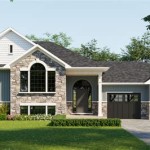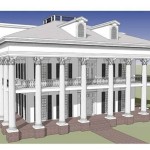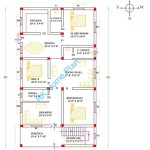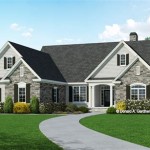Essential Aspects of Design Of House Plan
Designing a house plan is a crucial step in the homebuilding process. It determines the layout, functionality, and overall aesthetic of your future home. By considering several essential aspects, you can create a plan that meets your specific needs, enhances your lifestyle, and stands the test of time.
1. Functionality and Flow
The layout of your house should prioritize functionality and a smooth flow of movement. Consider the relationship between different rooms, such as the kitchen being adjacent to the dining area, and ensure there are clear pathways and minimal obstacles throughout the house.
2. Natural Light and Ventilation
Incorporate ample windows and skylights to maximize natural light and ventilation. This creates a brighter, healthier, and more energy-efficient living environment. Orient your house to take advantage of passive solar gain and cross-ventilation to minimize the need for artificial lighting and cooling.
3. Room Size and Proportions
Determine the appropriate size and proportions for each room based on its intended use. Consider the amount of furniture, storage, and movement required. Strike a balance between spaciousness and coziness to create comfortable and inviting living spaces.
4. Storage and Organization
Plan for ample storage throughout the house, including cabinets, closets, and built-in shelves. This helps keep clutter at bay, maintains order, and creates a more functional and pleasant living environment.
5. Outdoor Spaces
Extend your living space outdoors with patios, decks, or balconies. These areas provide additional relaxation, entertaining, and leisure opportunities. Consider the orientation, privacy, and access to natural elements when designing these spaces.
6. Energy Efficiency
Incorporate energy-efficient features into your house plan to reduce utility costs and environmental impact. Use high-performance insulation, energy-efficient appliances, and renewable energy sources such as solar panels.
7. Curb Appeal
Consider the exterior design of your house as well. The facade, landscaping, and overall aesthetic should complement the architectural style and enhance the neighborhood's visual appeal. Create a cohesive and visually pleasing exterior that reflects your tastes and preferences.
8. Future Needs
Think ahead and anticipate potential changes in your lifestyle or family circumstances. Consider designing features that accommodate future expansions, such as an extra bedroom or a home office. Plan for accessibility and age-in-place considerations if necessary.
9. Collaboration and Expertise
Collaborate with an experienced architect or draftsman to translate your ideas into a comprehensive house plan. Their expertise can ensure structural integrity, building code compliance, and a design that optimally meets your requirements.
Conclusion
By meticulously considering these essential aspects, you can create a house plan that fulfills your functional, aesthetic, and lifestyle needs. A well-designed house plan provides the foundation for a comfortable, enjoyable, and enduring home that reflects your unique personality and aspirations.

House Plans How To Design Your Home Plan

Floor Plans Types Symbols Examples

Small House Plans Popular Designs Layouts

22 House Design With Floor Plans You Will Love Simple Two Story Affordable Designs Exterior

Small House Design Shd 2024007 Pinoy Eplans One Y Bungalow Plans Layout

Top 5 Modern House Plans With Photos Floor Archid

House Plans How To Design Your Home Plan

Misty Falls House Plan By Archival Designs

Free House Design Home And Plans

Home Plan House Designers In Bangalore Buildingplanner








